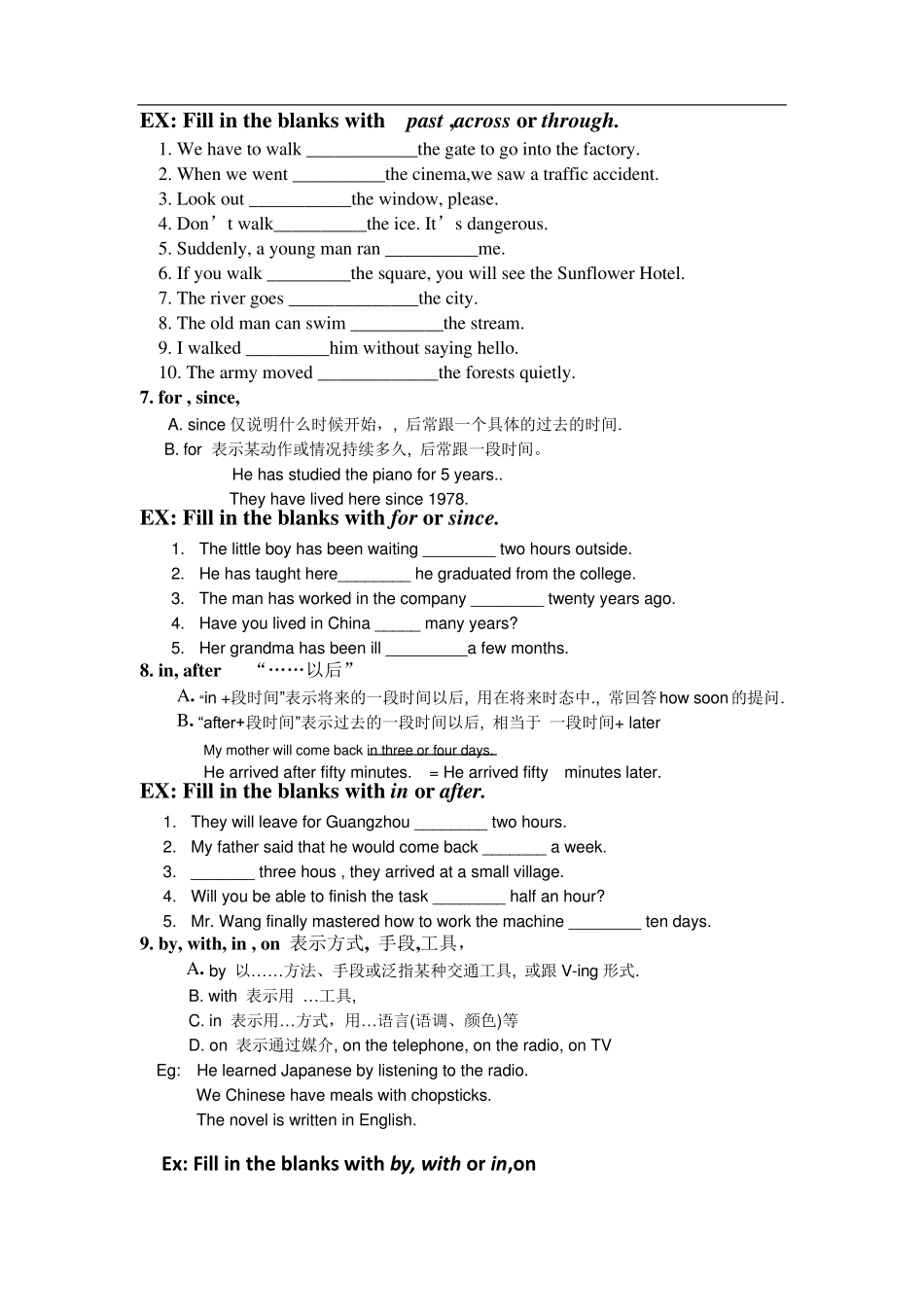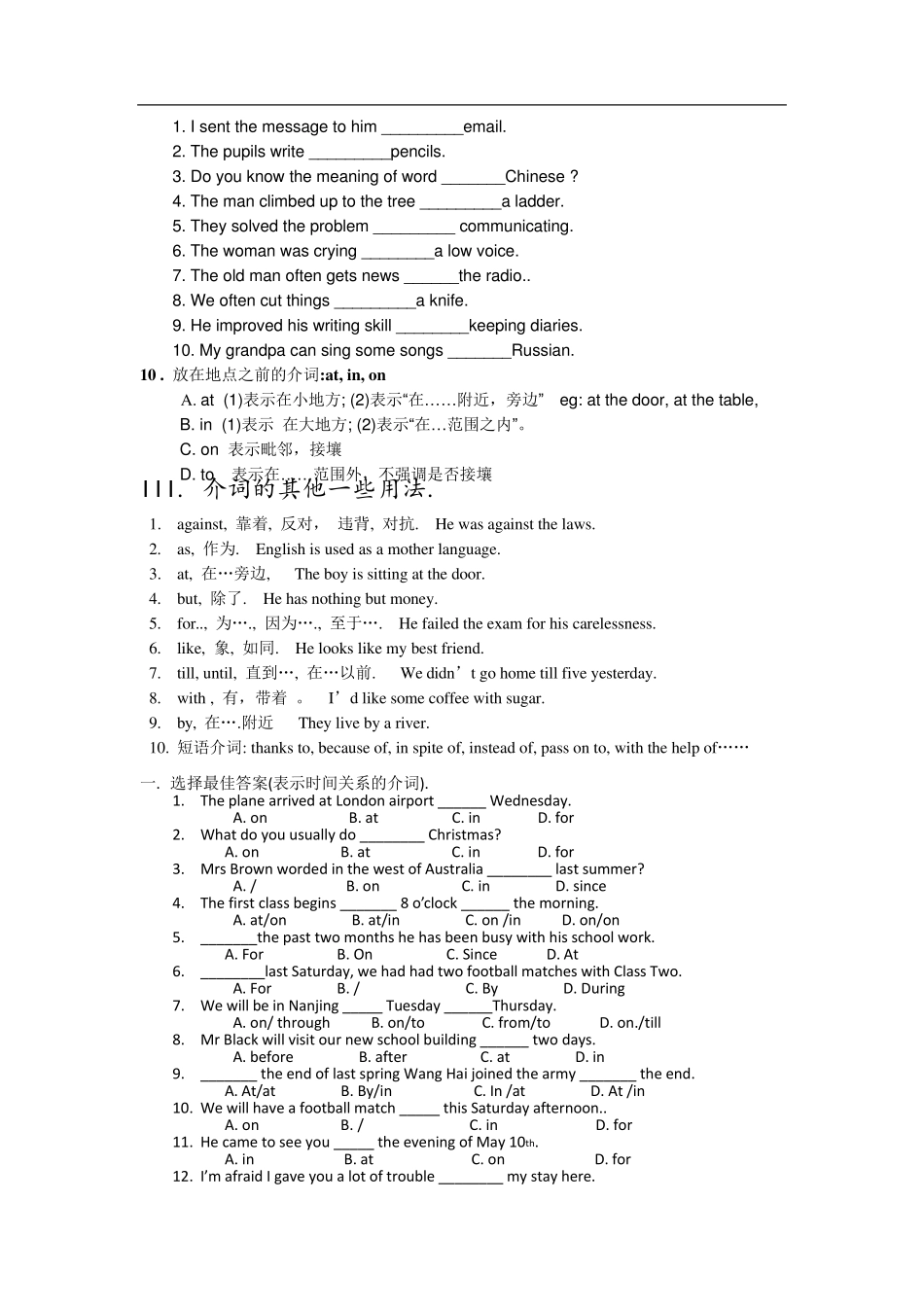介 词 的 用 法 与 练 习 I. 介词的种类 1. 简单介词,常用的有at, in, on, about, across, before, beside, for , to, without, to, by, with, of, over, behind, up, after, against 等。 2. 复合介词,如 on to , along with, because of, in front of, instead of 等。 3. 介词和其他词类的习惯搭配关系 (1) 和动词的搭配,如agree with, ask for, belong to, keep away from, care about 等。 (2) 和形容词的搭配,如afraid of, angry with, different from, good at (3) 和名词的搭配,如answer to , key to, reason for, a visit to 等. ***介词后常跟人称代词的宾格和动词的ing 形式。 II. 某些介词的意义与用法区别 1. at, on, in(表时间) : at 表示时间的一点;in 表示一个时期;on 表示特殊日子 A. at后常接几点几分,天明,中午,日出,日落,开始等。如: at five o’clock, at down, at noon, at midnight, at that time/moment ,at this time of day B. in 后常接年,月,日期,上午,下午,晚上,白天,季节,世纪等。如: in 2006, in May,2004 ,in the morning ,in the afternoon ,in the evening , in the 21st century ,in three days ,in a week ,in spring 。 ** C. on 后跟某日,星期几,某日的朝夕,节日等,即具体某一天极其早\中、晚. on Sunday ,on a warm morning in April ,on a December night ,,on Christmas afternoon ,on October 1,1949 ,on New Year’s Day. **(特别提示): 在 last, nex t, this, that, some, ev ery 等词之前一律不用介词 2. between, among(表位置) “在…..之间” A. between 仅用于二者之间, 如 I’m sitting between Tom and Alice. B. among 用于三者或三者以上之间。如: He is the best among the students. 3. beside, besides, except beside 意为"在… 旁边", He sat beside me. besides 意为"除… 之外", 包括在内。 What do you want besides this? except 意为"除… 之外", 不包括在内 They go to work in a week except Saturday. 4. in the tree, on the tree in the tree ,指动物或人等外...


